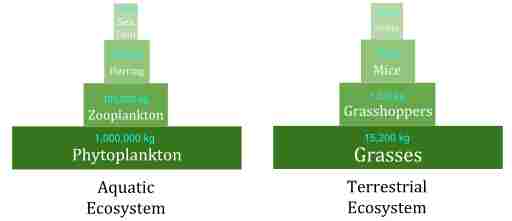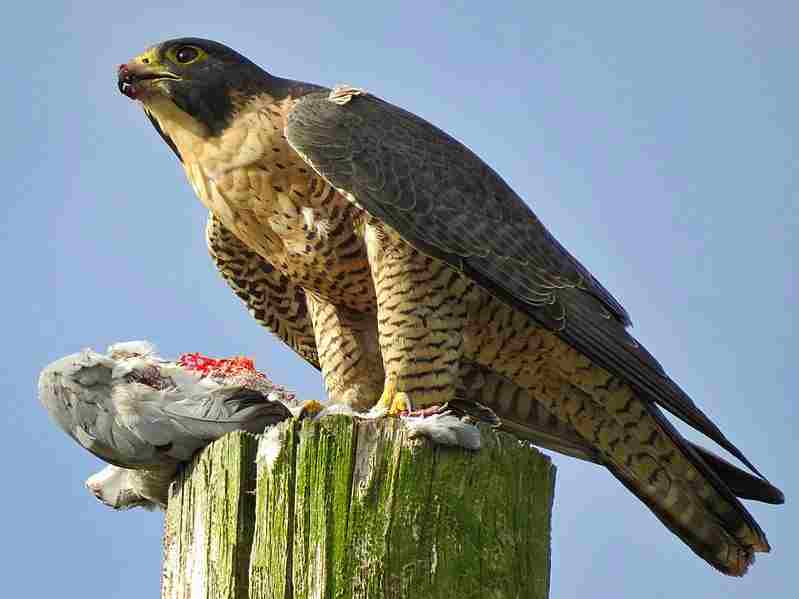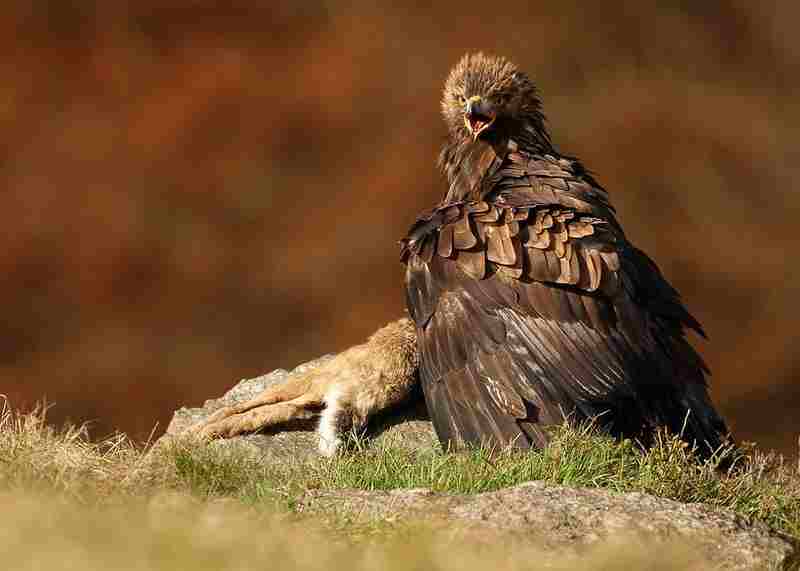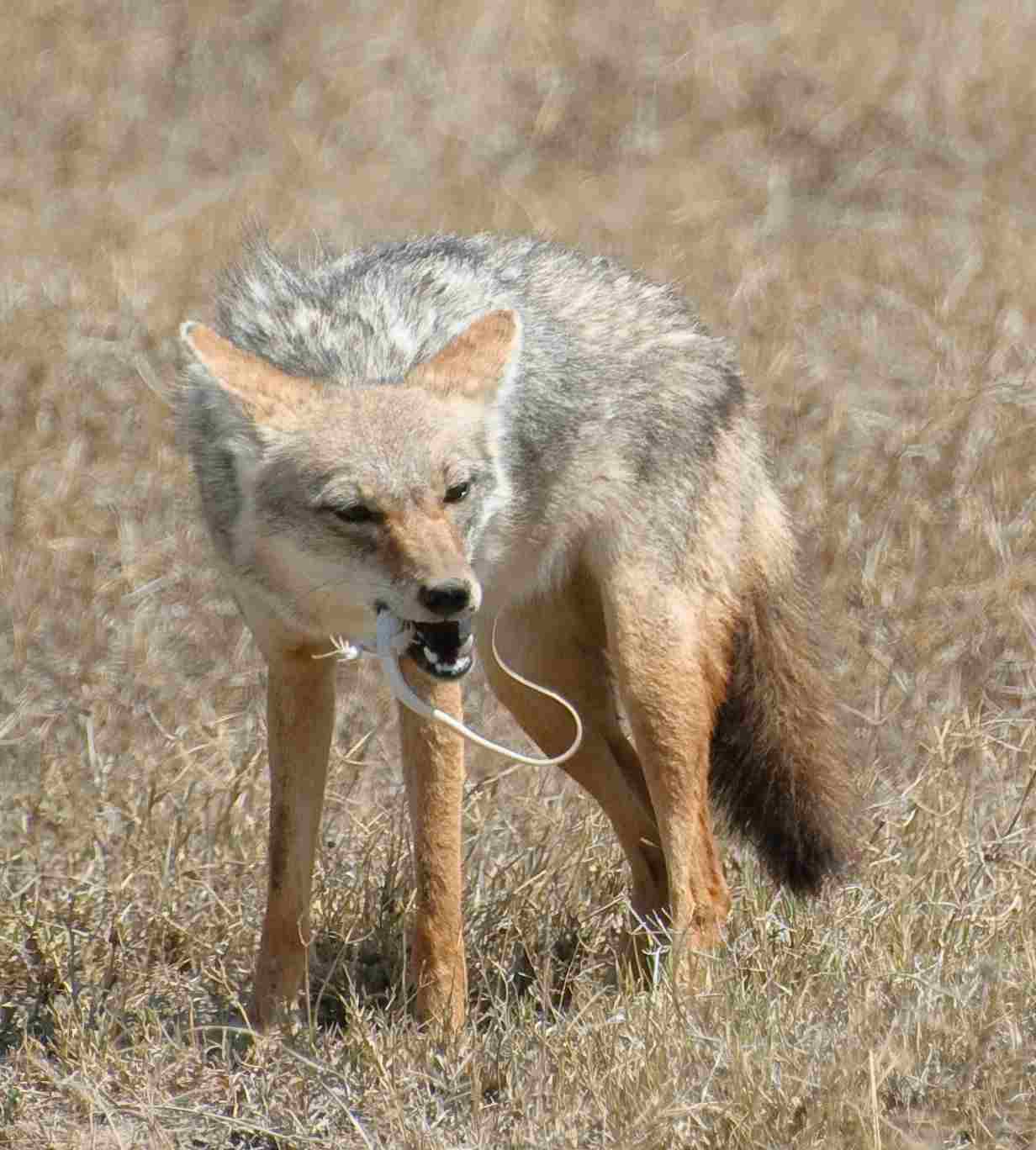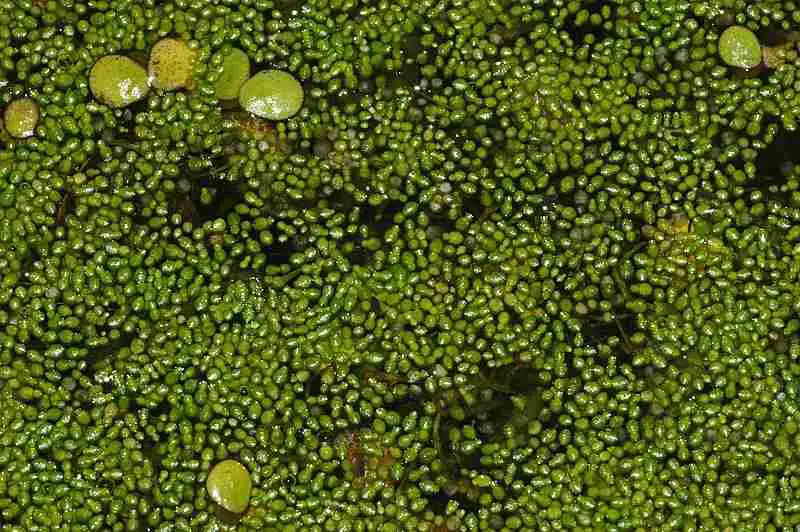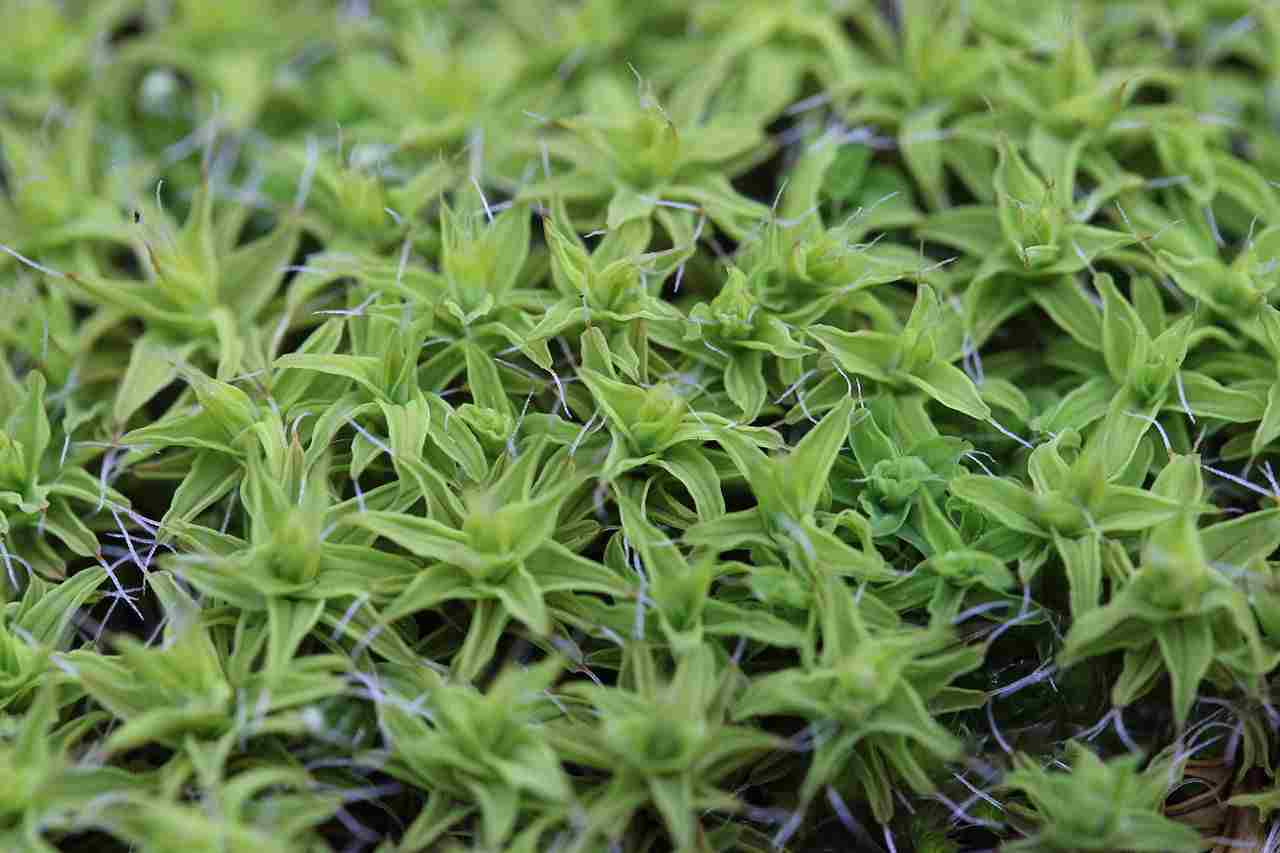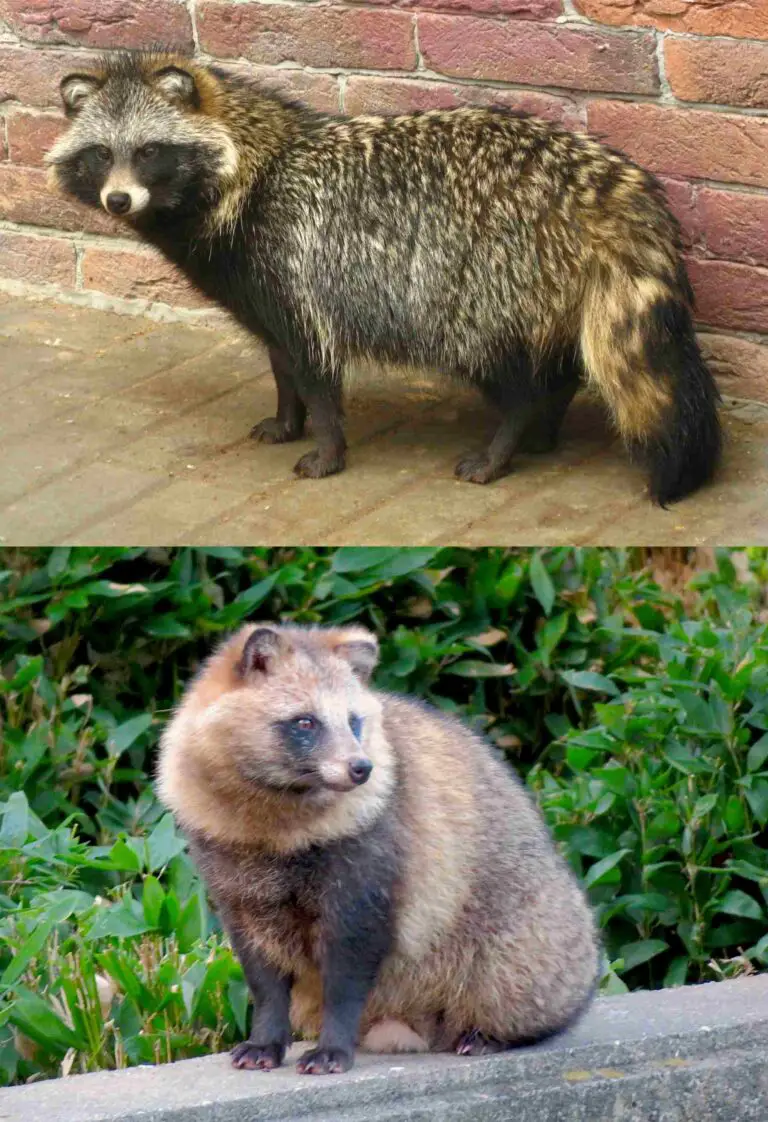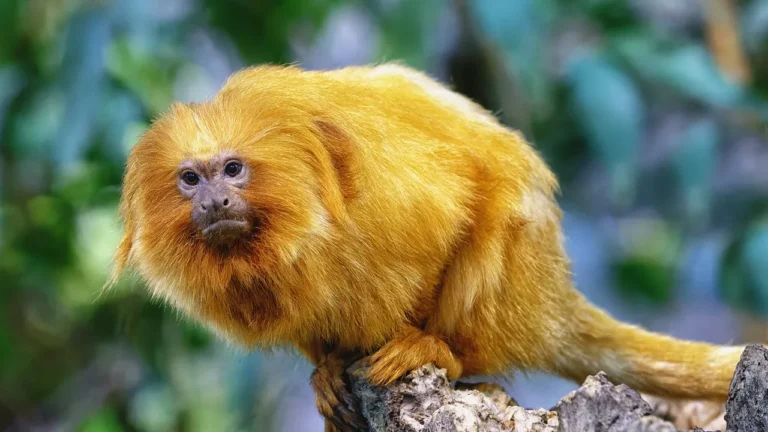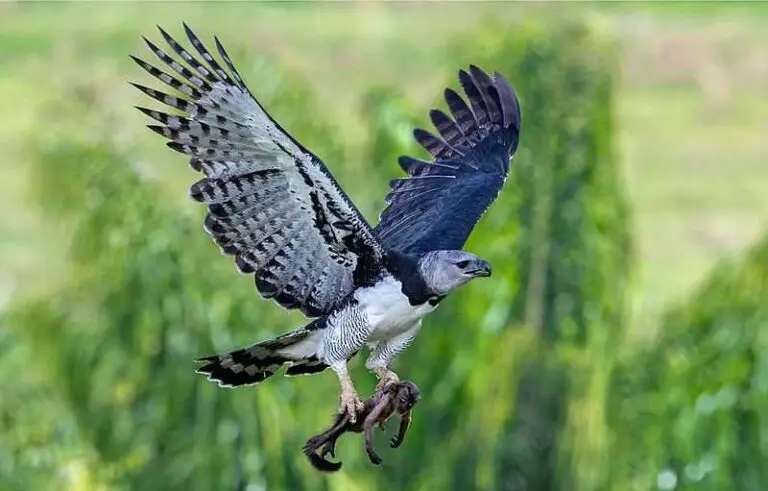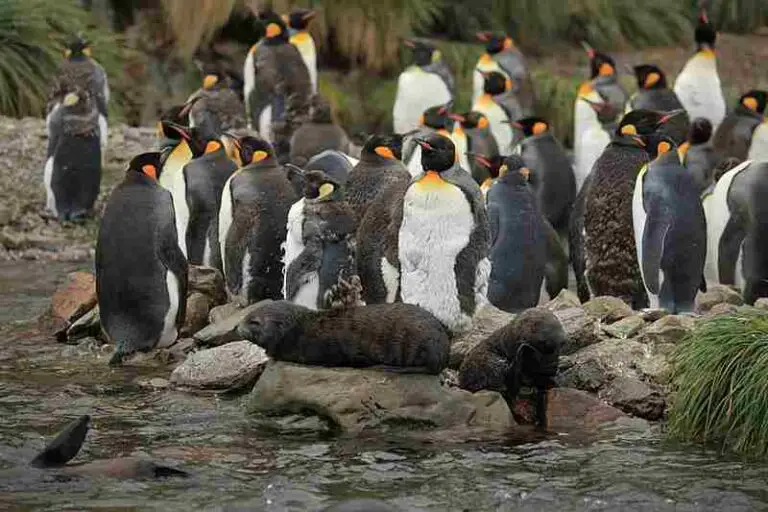5 Grassland Energy Pyramid Trophic Levels Discussed
Grassland energy pyramid comprises of autotrophs, primary consumers, secondary consumers, tertiary consumers, quaternary consumers, and the interplay of ecologic interactions and (decomposer-driven) nutrient cycling processes.
This article discusses the grassland energy pyramid in terms of its trophic levels, organisms and energy dynamics, as follows;
1). Producers in a Grassland Energy Pyramid
Producers are effective in their role with regards to energy transfer in a grassland ecosystem.
Members of this trophic category are typically plants (particularly grasses, alongside forbs and legumes [7]), that are capable of carrying out photosynthesis. A discussion on their role in the process of energy transfer is provided below.
Role of Grassland Producers in the Energy Transfer Process
The role of grassland producers in energy transfer can be summarized to include; primary energy conversion, food web support, energy transmission, biomass accumulation, and sustenance of ecological functions.
Producers are the primary energy converters in the grassland ecosystem. They utilize sunlight, water, and carbon dioxide to produce organic compounds, through the process of photosynthesis. This process involves the capture of solar energy and its conversion into chemical energy stored in the form of carbohydrates.
The grassland food chain or trophic pyramid depends ultimately on producers, which occupy its lowest level. Producers constitute the foundation of energy flow for the entire ecosystem, while all other organisms, such as herbivores, carnivores, omnivores and decomposers, directly or indirectly rely on the energy that is provided by producers.
Energy transmission from grassland producers to herbivores occurs when the producers are consumed as food sources. Grazing animals like zebras, bison, and some insects feed on grasses, and extract energy from the plant material for their own survival.
Grassland producers contribute significantly to the total biomass of the ecosystem. Total biomass is itself a measure of the overall amount of living organic matter in the ecosystem.
In a grassland, the relatively-high abundance of grasses results in a substantial amount biomass at the producer level. This is often represented diagrammatically using upright biomass pyramids that show a concentration of mass at the base.
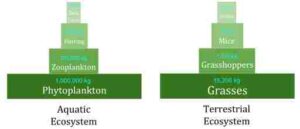
Secondary consumers, such as predatory organisms, rely indirectly on the energy obtained from primary consumers (herbivores). Since herbivores depend on producers for sustenance, the same producers indirectly support the energy needs of higher trophic levels (that feed on herbivores).
The efficiency of energy transfer within the grassland ecosystem, is largely determined by producers.
Typically, only a fraction of the energy that is captured by producers is successfully transferred to herbivores, and an even smaller portion reaches secondary and tertiary consumers. This trend is due to energy loss as heat and through metabolic processes [1]. The compositional and structural attributes of producers, influence the efficiency with which their energy is transferred to herbivores.
By capturing solar energy and producing organic matter, producers sustain essential ecosystem functions in the grassland. They contribute to processes like nutrient cycling and soil formation, and influence the overall sustainability of the ecosystem.
Geometry of the Pyramid of Numbers in Grassland Ecosystem
The pyramid of numbers in a grassland ecosystem is upright or erect, meaning that there are more producers (plants) at the base of the pyramid than primary consumers (herbivores), and even fewer secondary and tertiary consumers (carnivores or predators).
This tapered pyramid shape reflects the typical structure and relativity of trophic levels in such ecosystems, where a large number of plants support relatively few herbivores, which are needed to support a smaller number of carnivores, and so on. It must be noted that this concept only addresses population size and does not necessarily reflect the species richness, diversity and composition of the ecosystem.
2). Primary Consumers in a Grassland Energy Pyramid
Primary consumers constitute a crucial component of the energy pyramid of a grassland ecosystem.
Accordingly, they have a vital role to play in the process of energy transfer within this ecosystem.
Role and Identity of Grassland Primary Consumers With Regards to Energy Transfer
The role of primary consumers in the grasslands is hinged upon their relationship with producers, which serve as their main food source.
Primary consumers are herbivores that feed on producers, which are typically grasses and a few other types of plants (vascular and non-vascular) in grassland ecosystems.
Their primary role is to convert the plant material (autotrophic biomass) into their own energy and biomass, which can be transferred to organisms in higher trophic levels, including secondary consumers.
In grassland ecosystems, primary consumers include a variety of organisms. These may include insects, reptiles, birds, small mammals, and some large mammals.
Common examples of primary consumers in the grasslands are; grasshoppers, rabbits, squirrels, giraffes, bison and zebras. They are essentially the grazers and browsers that feed on plant life in grasslands.

The primary source of energy for primary consumers is the plant material they consume. They obtain energy by consuming grass leaves and stems, forbs, and other kinds of plant matter [6].
This plant material contains the stored energy captured by producers during photosynthesis. Primary consumers extract this stored energy by breaking down plant matter in their digestive systems.
Energy Transfer Efficiency and Grassland Primary Consumers
Primary consumers occupy the second trophic level in the grassland ecosystem, following producers (plants) which occupy the first trophic level.
While primary consumers obtain energy directly from plants, they do not successfully utilize and transfer all the bioenergy contained in plant materials. Instead, some of this energy is lost in the process of digestion and other metabolic processes.
The efficiency of energy transfer from producers to primary consumers is relatively low under natural conditions, with only a fraction of the energy from plants being incorporated into the primary consumer's biomass.
As already implied, primary consumers serve as a critical trophic link in the food chain, as well as a unifying element of the grassland food web. They are a source of nutrients and energy for secondary consumers, which are mostly carnivores. These secondary consumers, which are discussed in the next section, may include reptilian and mammalian predators like snakes and hyenas respectively, which prey on the primary consumers.
Overview of Grassland Primary Consumers as Energy Pyramid Contributors/Components
Primary consumers in grasslands include herbivorous insects, small mammals like rabbits and prairie dogs, and some large mammals like giraffes and zebras.
The primary energy source for these primary consumers is plant material, which may be in the form of grasses, seeds and roots, that contain stored energy captured by through photosynthetic processes.
3). Secondary Consumers in a Grassland Energy Pyramid
Secondary consumers have a crucial role to play in the energy transfer process within a grassland ecosystem.
They are the organisms found in the third trophic level of the food chain, and their role is crucial for maintaining the balance of the ecosystem.
Role of Secondary Consumers in Energy Transfer Within A Grassland
Secondary consumers are carnivorous organisms that feed mainly on primary consumers, which, in turn, feed on plants like grasses.
Their role with regards to energy dynamics, is to capture and consume primary consumers, thereby transferring the energy stored in these herbivores, to their own biomass.
Secondary consumers in grassland ecosystems are typically carnivorous animals, which have developed adaptations to prey on lower organisms in the trophic hierarchy, like herbivores.
Examples of secondary consumers in grasslands include snakes, monitor lizards, jackals, frogs, foxes, and various bird species including avian insectivores and some raptors that feed on mammals or invertebrates.

The primary source of energy for grassland secondary consumers is the body tissues of their prey (mostly primary consumers). Secondary consumers obtain energy by feeding on these mammals, birds, reptiles, or insects that may be herbivorous or also carnivorous/omnivorous.
Typically, energy transfer from primary consumers to secondary consumers is characterized by measurable losses. This means that only a portion of the total energy stored in primary consumers is successfully acquired by the secondary consumers.
Energy is lost during digestion, locomotion, and various metabolic processes, leading to a less-than-100-percent transfer efficiency.
Secondary consumers are essential for their role in supporting the next trophic level, which is occupied by tertiary consumers. The tertiary consumers are organisms that prey on both primary and secondary consumers.
Lastly, secondary consumers in grasslands play a pivotal role in regulating the populations of primary consumers, which in turn helps control plant populations. This ripple dynamic is known as trophic cascading [3]. By maintaining a balanced ecosystem, secondary consumers contribute to the functioning and continuity of the grassland biome.
Overview of Secondary Consumers in the Grassland Energy Pyramid
Secondary consumers in the energy pyramid are level-3 organisms that feed on primary consumers, and transfer energy and nutrients to tertiary consumers above them.
In the grasslands, secondary consumers include carnivorous animals like monitor lizards, snakes, jackals, frogs, foxes, and various bird species.
4). Tertiary Consumers in a Grassland Energy Pyramid
Tertiary consumers are often the apex predators in a grassland ecosystem, occupying the high section of the energy pyramid, from where they play a key role in energy transfer within the ecosystem.
Role of Grassland Tertiary Consumers in Energy Transfer
The role of tertiary consumers in the grassland energy pyramid is mainly predation.
These organisms feed on primary and secondary consumers, as a result of biological advantages which they possess in terms of intelligence, adaptability, size, strength, efficient locomotion or sensitivity.
Tertiary consumers help regulate the populations of their prey which include both secondary consumers (like snakes, lizards) and primary consumers (like rodents, ungulates). By controlling these populations, they indirectly influence the plant species in the ecosystem, as described by the cascading effect concept.
Energy transfer from lower trophic levels to tertiary consumers is a dynamic, multilevel process that contributes to sustaining the grassland energy pyramid.
Tertiary consumers obtain energy by consuming lower organisms that have already acquired the required resources from primary producers (plants) or other low-level consumers. This process helps to convert low trophic-level energy into high trophic-level biomass.
Organisms that function as tertiary consumers in the grasslands are typically scavengers or relatively-powerful carnivores, such as wild dogs, spotted hyenas, cheetahs, and vultures, which possess various adaptations for hunting or scavenging.
Some studies may place scavengers like vultures and hyenas in the absolute apex trophic level (which is quaternary consumer-level in this article), because their feeding habit exposes them to biomass from consumers in all levels of the energy pyramid.
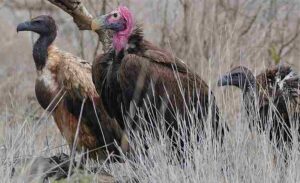
Tertiary consumers acquire energy either by consuming prey, or scavenging on the remains of other animals. For example, wild dogs may prey on large herbivores like antelopes through cooperative/communal hunting [4], while vultures may feed on the carcasses of grassland animals that have died from various causes.
Overview of the Energy Pyramid for Tertiary Consumers (with review of examples)
In an energy pyramid, tertiary consumers occupy the fourth trophic level, which is often the highest.
They receive approximately 10% of the energy available to organisms at the secondary level, which corresponds to about 1% of the original energy input from primary producers, according to the ten-percent rule of trophic transfer efficiency [5]. This pyramid dynamic results in decreasing energy magnitude and transfer efficiency in an upward direction.
Examples of tertiary consumers in grassland ecosystems include; wild dogs, vultures, cheetahs and spotted hyenas. Some of them are briefly described below;
African wild dogs are skilled predators that often hunting in packs to bring down large herbivores.
Vultures are scavengers that feed on the carcasses of animals. While these birds are not traditional predators, they play a key role in nutrient cycling by consuming carrion.
Cheetahs are adept hunters known for their agility and speed, which they use in pursuing and capturing fast-moving prey like gazelles.
In general, tertiary consumers are important in maintaining the balance and ecological-wellbeing of grasslands. They help to prevent overpopulation of herbivores (which can cause overgrazing) and control the spread of diseases, by removing weak or sick animals from the ecosystem and consuming carrion.
5). Quaternary Consumers in a Grassland Energy Pyramid
Quaternary consumers are the absolute apex predators in an ecosystem, occupying the highest trophic level in the energy pyramid.
Within the context of grassland ecosystems, quaternary consumers can be described as contributors to energy transfer and overall ecological equilibrium.
Role of Quaternary Consumers in the Grassland
Quaternary consumers are involved in energy transfer and population regulation in the grassland. As the apex predators of grassland ecosystems; they are situated at the highest trophic level and often have no natural predators within their ecosystem.
These apex predators help to regulate the populations of all lower trophic level organisms including primary, secondary and tertiary consumers, either directly or indirectly.
Energy is obtained by quaternary consumers through predation and/or scavenging. They play a critical role in the utilization and transformation of energy from lower trophic levels.
Quaternary consumers in grassland ecosystems are typically large and/or powerful carnivorous or omnivorous organisms. It must be noted that examples of these organisms may vary between geographic zones, so that quaternary consumers in the savanna tend to differ from those in temperate grasslands
Animals like gray wolves and grizzly bears, as well as large feline predators like cougars and leopards can be classified as part of the quaternary consumer population, depending on the specific grassland region.
Energy Source and Examples of Quaternary Consumers in Grasslands
Quaternary consumers acquire their nutrients and energy by consuming lower consumers or scavenging on the remains of dead grassland animals.
For instance, gray wolves may prey on large herbivores like elk or bison, while grizzly bears have a varied omnivorous duet and can consume prey, plant materials, and carrion [2].

Examples of quaternary consumers in grasslands are; gray wolves, grizzly bears, pumas, and African leopards.
Gray wolves are canid apex predators with well-developed social behaviors which enable them hunt large herbivores such as deer and bison in grassland ecosystems. They are important for maintaining the balance of herbivore populations and preventing overgrazing.
Grizzly bears are omnivorous apex predators that occur in some temperate grassland regions. They consume a highly diverse diet that includes plant material, mammalian prey, and carrion. They contribute to nutrient cycling by scavenging.
Pumas, also called mountain lions or cougars, are quaternary consumers in some grassland regions. They are solitary hunters and can prey on deer and smaller mammals.
In savanna grassland ecosystems, leopards are among the quaternary consumers. They are skilled climbers and are known to prey on a variety of lower organisms.
Overview of Grassland Quaternary Consumers
A quaternary consumer in the grasslands is an apex predator that occupies the fifth and highest trophic level in the energy pyramid, and feeds on other consumers or scavenges on animal remains.
Five examples of quaternary consumers in grassland ecosystems are gray wolves, grizzly bears, mountain lions, and African leopards. These predators are found at the top of the food chain and are important in regulating ecosystem dynamics.
*The Link Between Ecological Interactions and Energy Transfer in a Grassland Energy Pyramid
Ecological interactions and energy transfer are intricately linked within a grassland energy pyramid, and understanding this connection is important for the evaluation of ecosystem dynamics.
In a grassland ecosystem, energy flows through different trophic levels, beginning with primary producers, and moving upward through primary consumers, secondary consumers, tertiary consumers, and, in some cases, quaternary consumers. These interactions are all influenced by trophic relationships, such as predation, herbivory, and scavenging, and are central to the process of energy transfer within the ecosystem.
Below is a concise outline of trophic levels and their energy dynamics (transfers, losses) in the grassland;
1. Grassland Primary Producers
Primary producers, typically grasses, are autotrophic organisms that utilize sunlight through the process of photosynthesis, to convert solar energy into chemical energy in the form of organic compounds like carbohydrates.
These plants constitute the foundation of the grassland ecosystem. They capture renewable solar energy, and create the initial energy source for the entire food web.
Energy losses occur during photosynthesis due to reflection, non-chlorophyllous absorption, and dissipation of sunlight [9]. Only a fraction of the energy captured is successfully converted into plant biomass.
Total Bioenergy (level 1)-100%
2. Grassland Primary Consumers (Herbivores)
Primary consumers, which include herbivorous mammals and insects, mainly feed on primary producers to obtain energy.
The energy stored in tissues of plants, is transferred to grassland herbivores when they consume vegetation.
Energy losses occur in the process of plant material digestion by herbivores. Not all of the energy from plant consumption is successfully converted into biomass; rather, some is lost as heat/waste energy, feces, or in metabolic processes.
Total Bioenergy (level 2)-10%
3. Grassland Secondary Consumers (Carnivores)
Grassland secondary consumers, like snakes, savanna monitor lizards, or small-to-medium sized carnivorous mammals, prey on primary consumers (herbivores).
Energy flows from primary consumers to secondary consumers through the act and process of predation.
Losses of energy occur as secondary consumers metabolize prey. This implies that not all the energy from prey biomass is successfully converted into predator biomass.
Total Bioenergy (level 3)-1%
4. Grassland Tertiary Consumers (Top Predators)
Tertiary consumers in grasslands, which can be mammalian carnivores and scavengers like hyenas, wild dogs or vultures, occupy the highest trophic level and feed on secondary consumers.
Energy is transferred from primary and secondary consumers to tertiary consumers through the process of predation, while some secondary consumers also acquire energy from carrion.
Energy losses persist in this trophic level of the grassland energy pyramid, as tertiary consumers digest their prey, so that again, not all the energy initially acquired is converted into biomass.
Total Bioenergy (level 4)-0.1%
5. Grassland Quaternary Consumers (Apex Predators)
Grassland quaternary consumers, such as pumas, gray wolves and grizzly bears, are apex predators with no natural predators within their ecosystem or territory.
Energy is transferred from lower consumers to quaternary consumers through predation. Some quaternary consumers like bears, are omnivorous and can acquire energy through other means than predation.
Energy losses continue here as apex predators digest their prey. They may also scavenge on animal remains, contributing to nutrient cycling, but still incurring energy losses in the process.
Total Bioenergy (level 5)-0.01%
Energy Losses in the Pyramid
Energy losses typically occur at each trophic level due to metabolic and catabolic processes, including digestion and heat production, with incomplete transfer of energy characterizing many phases of these events.
The energy losses result in a decrease in total available energy in an upward direction through the energy pyramid. The concept of ecological efficiency (or trophic transfer efficiency, TTE), which is a measure of the proportion of energy transferred from one trophic level to the next, explains these losses.
In general, only about 10% of the energy is transferred successfully from one trophic level to the next, leading to a tapered, pyramidal distribution of energy.
The Role of Decomposers in the Energy Pyramid of a Grassland Ecosystem
Decomposers play an important yet often overlooked role in the energy pyramid of a grassland ecosystem.
These organisms can be said to occupy a unique position in this pyramid, as they are not directly involved in predation, scavenging or herbivory, but are fundamental to the recycling of nutrients and the sustainability of the ecosystem.
The following discussions (numbered) below highlight the role, identity and importance of decomposers in the grassland energy pyramid;
1. A Definition of Decomposers in the Grassland Ecosystem
Decomposers are organisms such as bacteria, fungi, nematodes, and detritivorous invertebrates like earthworms and certain arthropods (including dung beetles [8]), that are responsible for breaking down waste organic matter, including the remains or shed-structures of plants and animals. Avian scavengers like vultures are sometimes also classified as detritivores due to their carrion-consuming habits.
Their primary function can be referred to as biodegradation; which is to decompose complex organic molecules, such as cellulose and lignin, and transform these into simpler substances like water, carbon dioxide, and elemental nutrients.
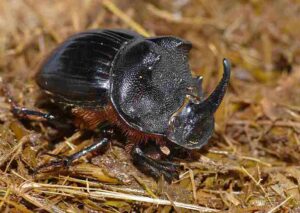
2. Decomposers' Role in the Energy Pyramid of Grasslands
The role of decomposers in the energy pyramid of the grassland comprises of nutrient recycling, detoxification, and energy release.
Nutrient cycling is an essential function of decomposers. When plants and animals produce waste, or die; they deposit organic matter that contains valuable nutrients like carbon, phosphorus and nitrogen.
Decomposers break down this organic matter, and release these nutrients back into the soil, where they can be taken up and assimilated by plants. This nutrient recycling dynamic ensures that a continuous supply of essential elements is maintained, especially for primary producers at the base of the energy pyramid.
Decomposers also have a role to play in natural detoxification or remediation, which involves breaking down and converting potentially harmful (organic) substances. In the absence of decomposers, these toxins could accumulate and pose a threat to other inhabitants of the ecosystem.
While decomposers do release some energy during their activities, it is primarily in the form of heat, and is not a major source of energy for any of the trophic levels. Energy in the form of biomass, is typically not a core output of decomposition. Rather, released-nutrients serve as the most prominent benefit of these organisms and their activities.
3. Facilitation of Energy Flow by Decomposers in Grasslands
Energy losses are endemic in the energy pyramid of a grassland ecosystem, occurring continuously as resources are transferred through the trophic levels.
Decomposers contribute to this energy loss by releasing heat energy during decomposition. However, as earlier pointed out, they are not a significant source of biomass or energy transfer to any of the main trophic levels.
While decomposers do not directly supply energy to primary consumers or higher trophic levels, their role in nutrient cycling immensely supports primary producers. This is because nutrients released through decomposition enhance the growth of grassland plants (primary producers), which, in turn, serve as food for herbivores, and fuel the energy flow in the ecosystem.
4. Contribution(s) of Grassland Decomposers to Overall Ecosystem Health
Grassland decomposers improve ecosystem resilience and functionality through their activities.
Native decomposers enhance the resilience of grassland ecosystems. By breaking down waste organic matter, they help prevent the accumulation of biomass, which could lead to pathogen spread, nutrient imbalances, inhibited vegetation growth.
Waste management is a key contribution of decomposers within the ecosystem. They are vital role in the clean up of plant and animal remains/wastes, thereby reducing the risk of disease outbreaks, and promoting overall hygiene.
Conclusion
The grassland energy pyramid comprises of;
1. Autotrophs
2. Primary Consumers
3. Secondary Consumers
4. Tertiary Consumers
5. Quaternary Consumers
It can be analyzed in terms of of ecological interactions, and also benefits from the presence and activities of decomposers.
References
1). Ballesteros, F. J.; Martinez, V. J.; Luque, B.; Lacasa, L., Valor, E.; Moya, A. (2018). "On the thermodynamic origin of metabolic scaling." Sci Rep. 2018 Jan 23;8(1):1448. Available at: https://doi.org/10.1038/s41598-018-19853-6. (Accessed 5 September 2023).
2). Bruce, M.; Fred, H. (2011). "The diet of grizzly bears in the Flathead River drainage of southeastern British Columbia." Canadian Journal of Zoology. 73. 704-712. Available at: https://doi.org/10.1139/z95-082. (Accessed 5 September 2023).
3). Clark, P.; Lee, D. (2006). "Trophic diversity in two grassland ecosystems." Journal of insect science (Online). 6. 1-11. Available at: https://doi.org/10.1673/2006_06_25.1. (Accessed 5 September 2023).
4). Jessica, C.; Matthew, W.; Alison, L.; Rosemary, G.; Jessica, W. (2023). "Finding a safe space: Denning range dynamics of African wild dogs in Zimbabwe." African Journal of Ecology. Available at: https://doi.org/10.1111/aje.13140. (Accessed 5 September 2023).
5). Jones, R.; Henderson, E. W. (2010). "The dynamics of energy transfer in marine food chains." South African Journal of Marine Science Volume 5 - Issue 1, Pages 447-465. Available at: https://doi.org/10.2989/025776187784522324. (Accessed 5 September 2023).
6). Jun, L.; Chao, F.; Deli, W.; Ling, W.; Brian, W.; Zhiwei, Z. (2015). "Impacts of grazing by different large herbivores in grassland depend on plant species diversity." Journal of Applied Ecology. 52. Available at: https://doi.org/10.1111/1365-2664.12456. (Accessed 5 September 2023).
7). Matt, S.; David, W.; Ben, T. (2009). "Grassland: Definition, Origins, Extent, and Future." Available at: https://doi.org/10.2134/2009.grassland.c4. (Accessed 5 September 2023).
8). Stanbrook, R.; King, J. R. (2022). "Dung beetle community composition affects dung turnover in subtropical US grasslands." Ecol Evol. 2022 Feb 22;12(2):e8660. Available at: https://doi.org/10.1002/ece3.8660. (Accessed 5 September 2023).
9). Walter, J.; Kromdijk, J. (2022). "Here comes the sun: How optimization of photosynthetic light reactions can boost crop yields." J Integr Plant Biol. 2022 Feb;64(2):564-591. Available at: https://doi.org/10.1111/jipb.13206. (Accessed 5 September 2023).
